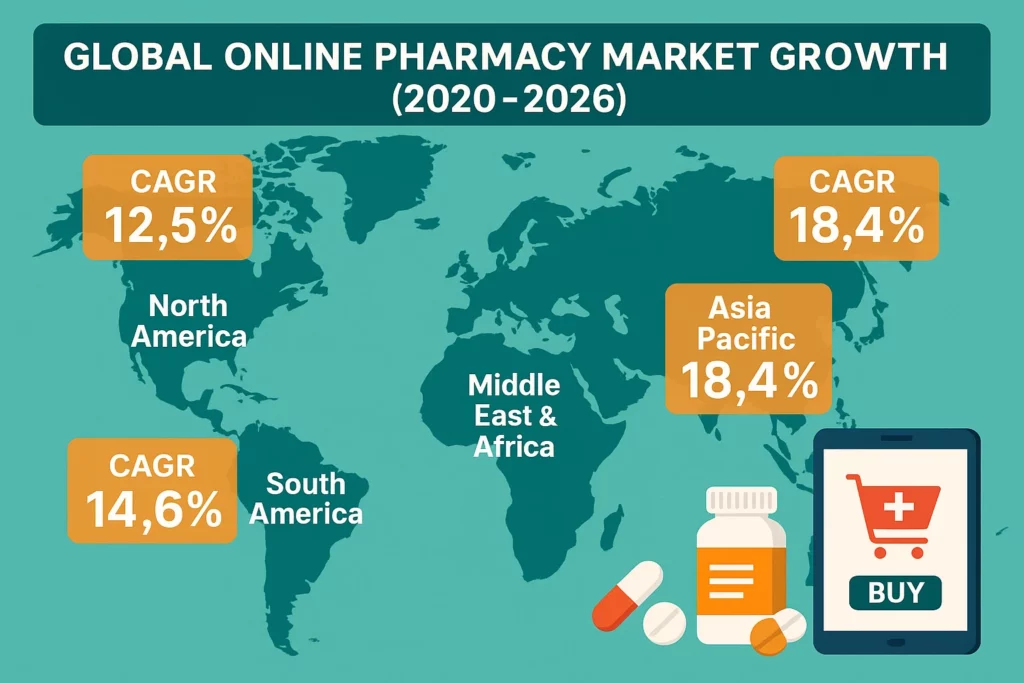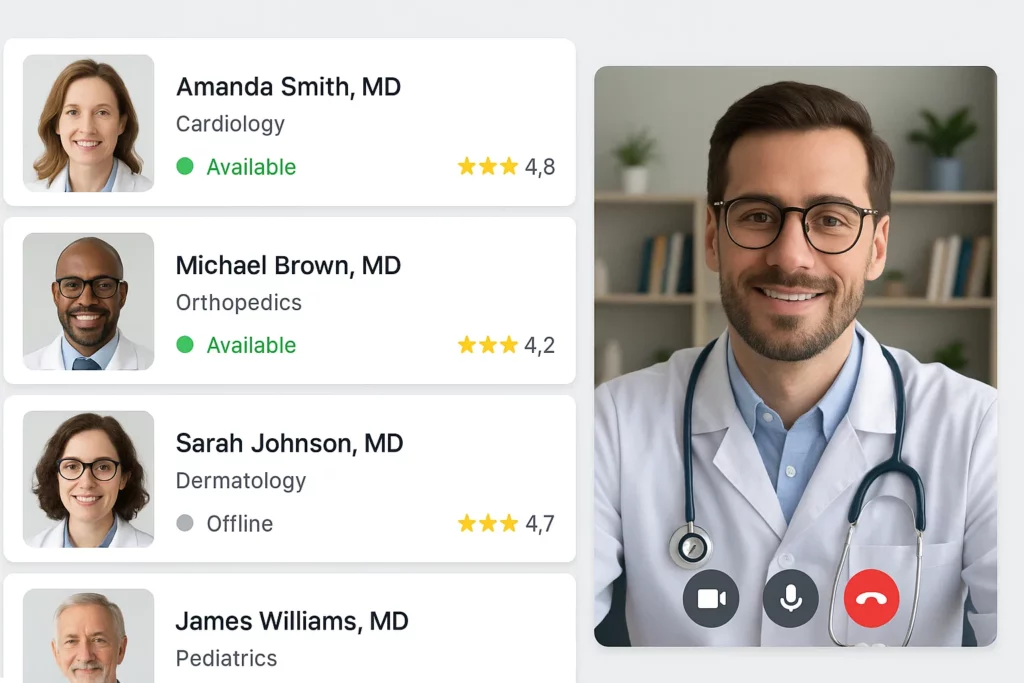If you’ve ever scrambled to find a pharmacy open at 11 PM, you already understand the appeal of online healthcare. Now imagine being the one behind that life-saving app — delivering medicine, advice, and even video consultations right to people’s screens. Sounds powerful? That’s because it is. And it’s not just a good deed — it’s a great business.
Startups and creators are tapping into the digital healthcare wave, not just to “Uber-ize” medicine delivery but to build sticky ecosystems that do way more: recurring prescriptions, real-time diagnostics, wellness products, telehealth — all wrapped in a few clicks. And in a post-pandemic world where convenience is king, pharmacy apps have gone from “nice to have” to “how did I live without this?”
If you’re eyeing this booming space, you’re not too late. With the right model and execution, there’s massive room for disruption. At Miracuves, we help forward-thinkers build online pharmacy & healthcare platforms that are fast, secure, and cash-flow positive from the get-go.
Why Online Pharmacy Apps Are Booming (And Bankable)
Gone are the days of plastic pillboxes and paper prescriptions. The global online pharmacy market is racing toward $177 billion by 2026, according to Statista. That’s not hype — that’s demand backed by demographics, chronic illnesses, and smartphone addiction.
From Tier-2 towns in India using apps like 1mg or NetMeds, to U.S. seniors relying on PillPack (Amazon-owned), healthcare has moved into handheld territory. Users love the transparency, price comparisons, auto-refills, and — let’s be honest — not having to put on pants to get medicine.

Also Read :-How to Start an Online Pharmacy & Medicine Delivery Platform Business
Core Business Models for Online Pharmacy & Healthcare Platforms
Let’s break down the key monetization strategies and business setups that actually work.
1. E-commerce for Medicines & Wellness Products
Think Amazon, but for Aspirin. You list inventory — either your own or via dropshipping — and let users browse, add to cart, and check out. Revenue comes from:
- Product markups
- Delivery fees
- Subscription refills (hello, predictable revenue!)
Real-world inspiration: PharmEasy, NetMeds
2. Prescription Management & Auto Refill Subscriptions
This is where things get sticky (in a good way). Users upload their prescriptions, get them validated via integrated doctors or AI OCR, and opt-in for monthly deliveries. You can charge:
- A recurring subscription
- Priority delivery fees
- Discounted bundle packs
Fun fact: Chronic care management = highest LTV users
3. Telemedicine Integration
Now we’re cooking with code. Add a teleconsultation module (video/audio/text chat) and you instantly multiply your value.
Monetization includes:
- Pay-per-consultation fees
- Monthly/annual doctor access subscriptions
- Marketplace commission cuts from specialists
Examples: Practo, Teladoc, Zocdoc

4. Diagnostics & Lab Test Bookings
Users book at-home tests or lab appointments through your app. Your platform earns via:
- Commission per booking (flat or %)
- Featured placement for labs
- Add-on upsells (vitamin panels, faster reports)
Offer curated health packages like “Full Body Checkup” or “Diabetes Monitor Kit”
Learn More :-How Much Does It Cost to Build an Online Pharmacy App from Scratch?
5. B2B Sales to Clinics, Hospitals & Pharmacies
Who says you have to go D2C? Hospitals, nursing homes, and clinics often need bulk medicines or white-label versions of your tech stack.
Revenue streams:
- Bulk B2B orders
- SaaS model for pharmacy inventory software
- White-label app licensing
6. Affiliate Partnerships & Sponsored Listings
Once you hit scale, brands will want to be listed on your platform.
Revenue flows in through:
- Sponsored products (top of search)
- Affiliate links for fitness gear, supplements, insurance
- Content marketing partnerships with wellness creators
Examples: 1mg wellness blogs, Amazon Associates-style links
7. Freemium Health Tools & Upsells
Free BMI calculators, pill reminders, or menstrual trackers attract users. Then, smart nudges drive them toward:
- Paid diet plans
- Personalized supplements
- Premium AI-based symptom checkers
Essential Features for Business Model Execution
To support these monetization strategies, your platform should include:
- AI-based prescription scanner (OCR)
- Secure chat & video modules (HIPAA/GDPR compliant)
- Role-based dashboards (admin, doctor, pharmacy, user)
- Multi-language & multi-currency support
- In-app wallet or UPI/payment gateway
- Inventory, delivery & CRM integration
Case Study Snapshot: PillPack (Amazon)
PillPack turned the “auto-refill” model into a billion-dollar acquisition. With pre-sorted meds and insurance compatibility, they captured the recurring needs of chronic users. The kicker? They simplified what others overcomplicated — and that’s your startup’s biggest opportunity.

Read More :-How to Market an Online Pharmacy & Healthcare App Successfully After Launch
Conclusion
Online pharmacy and healthcare platforms aren’t just timely — they’re timeless. If you build smart and lean with monetization baked in, you’re not just solving real problems — you’re building a future-proof business.
At Miracuves, we help innovators launch high-performance app clones that are fast, scalable, and monetization-ready. Ready to turn your idea into reality? Let’s build together.
FAQs
Can I launch an online pharmacy app without owning a physical pharmacy?
Yes — you can operate via partner pharmacies or dropshipping models, depending on your country’s regulations.
How do I handle prescriptions and legal compliance?
Use AI-based scanners for upload validation and partner with certified doctors for approval. Always comply with local pharma laws.
What’s the best way to earn recurring revenue?
Auto-refill subscriptions for chronic care meds, plus teleconsultation memberships, are gold mines for LTV
Do I need a full-time medical team?
Not always. Many platforms operate using partner doctors or on-demand consultations from registered networks.
Is the market saturated?
Not at all. There’s room for hyperlocal, niche-specific, or multilingual platforms — especially in emerging regions.
Can Miracuves help me build a full-stack healthcare app?
Absolutely. From e-commerce to telemedicine and lab bookings — we build clone-ready platforms tailored for monetization.








